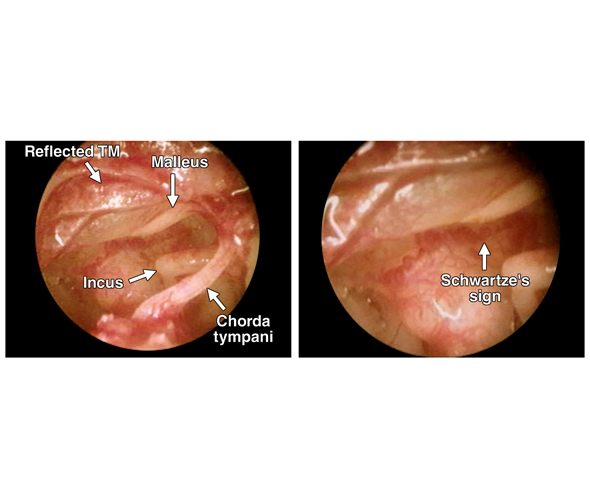1.
Review the histopathology of otosclerosis including the three different stages of otosclerosis.
2.
What portions of the temporal bone does otosclerosis affect?
3.
What is “Schwarze’s sign”?
4.
Discuss the epidemiology of otosclerosis.
5.
What is the clinical presentation of otosclerosis? What is paracusis of Willis?
6.
What does a typical audiogram look like in a patient with otosclerosis?
7.
Discuss the diagnostic value of CT imaging in diagnosing otosclerosis.
Reference(s):
Wegner, I., van Waes, A. M. A., Bittermann, A. J., Buitinck, S. H., Dekker, C. F., Kurk, S. A., … Grolman, W. (2016). A Systematic Review of the Diagnostic Value of CT Imaging in Diagnosing Otosclerosis. Otology & Neurotology : Official Publication of the American Otological Society, American Neurotology Society [and] European Academy of Otology and Neurotology, 37(1), 9–15.
8.
You have given a clinic patient the diagnosis of otosclerosis. She is not interested in surgery. What other options does she have?
9.
Discuss stapedectomy vs. stapedotomy
Reference(s):
House, H. P., Hansen, M. R., Al Dakhail, A. A. A., & House, J. W. (2002). Stapedectomy versus stapedotomy: comparison of results with long-term follow-up. The Laryngoscope, 112(11), 2046–2050.
10.
What are the contraindications to surgery for otosclerosis?
11.
You have signed up your first patient for a stapedotomy-drill vs. laser? What types of lasers would you consider?
12.
What is Carhart’s notch and why does it disappear after successful surgery?
13.
What problems might you encounter intra-op and how would you deal with them?
14.
How can superior semicircular canal dehiscence mimic the presentation of otosclerosis, and how you can differentiate between them using audiometric testing preoperatively?
15.
Your patient who is s/p stapedectomy has hearing loss and vertigo. How will you differentiate between a reparative granuloma and a perilymph fistulae?
16.
When should you consider cochlear implantation for patients with otosclerosis?
17.
Discuss the different possible etiologies of otosclerosis including viral, autoimmune and genetic.
Reference(s):
Schrauwen, I., & Van Camp, G. (2010). The etiology of otosclerosis: a combination of genes and environment. The Laryngoscope, 120(6), 1195–1202.
What will you tell your patient about chorda tympani injuries?
18.
How is the hearing loss in Osteogenesis imperfecta like otosclerosis?
Reference(s):
Vincent, R., Wegner, I., Stegeman, I., & Grolman, W. (2014). Stapedotomy in osteogenesis imperfecta: a prospective study of 32 consecutive cases. Otology & Neurotology : Official Publication of the American Otological Society, American Neurotology Society [and] European Academy of Otology and Neurotology, 35(10), 1785–1789.
19.
Discuss pros and cons of local versus general anesthesia in stapes surgery.
Reference(s):
Wegner, I., Bittermann, A. J. N., Zinsmeester, M. M., van der Heijden, G. J. M., & Grolman, W. (2013). Local versus general anesthesia in stapes surgery for otosclerosis: a systematic review of the evidence. Otolaryngology–Head and Neck Surgery : Official Journal of American Academy of Otolaryngology-Head and Neck Surgery, 149(3), 360–365.


